AI Summary
Do you want to send email to WordPress users from your admin dashboard? It’s actually quite simple to use WordPress for sending emails to your registered users.
This can be useful if you have a membership site and want to send email announcements or other updates to the registered members of your site.
First, we’ll fix WordPress’s unreliable email delivery system with WP Mail SMTP, then we’ll add a free plugin that gives you the “send to users” functionality you need.
When Should You Send Email to WordPress Users?
WordPress automatically sends transactional emails to your customers like order receipts and password reset links. But you can also send mass emails to your entire list of users from WordPress.
While this isn’t a recommended practice, it’s a good option to have in case you don’t have a proper email list maintained in an email marketing service.
If your website allows users to register, learning how to email users right from your WordPress dashboard is always an important skill. You may want to send emails about new product updates, changes to your website, or other important announcements.
How to Send Email to All WordPress Registered Users
To send emails to your WordPress users, just follow the steps below. First, we’ll set up WP Mail SMTP to take care of your WordPress email delivery from the backend. Then, we’ll set up another plugin that lets you select your WordPress email recipients, compose an email, and send it.
- Step 1: Install the WP Mail SMTP PLugin
- Step 2: Choose a Reliable Email Provider
- Step 3: Get the Send Users Email Plugin
- Step 4: Send Email to Registered Users
- Step 5: Track Your WordPress Emails (Optional)
Step 1: Install the WP Mail SMTP PLugin
Before you can send emails to your users, you first need to ensure your website can reliably send emails at all.
By default, WordPress uses PHP Mail for emails which is commonly responsible for poor email delivery and spam blocks by mailing servers.
A much more dependable method for sending emails takes advantage of SMTP, where your emails are properly authenticated, so their legitimacy is easy to verify.
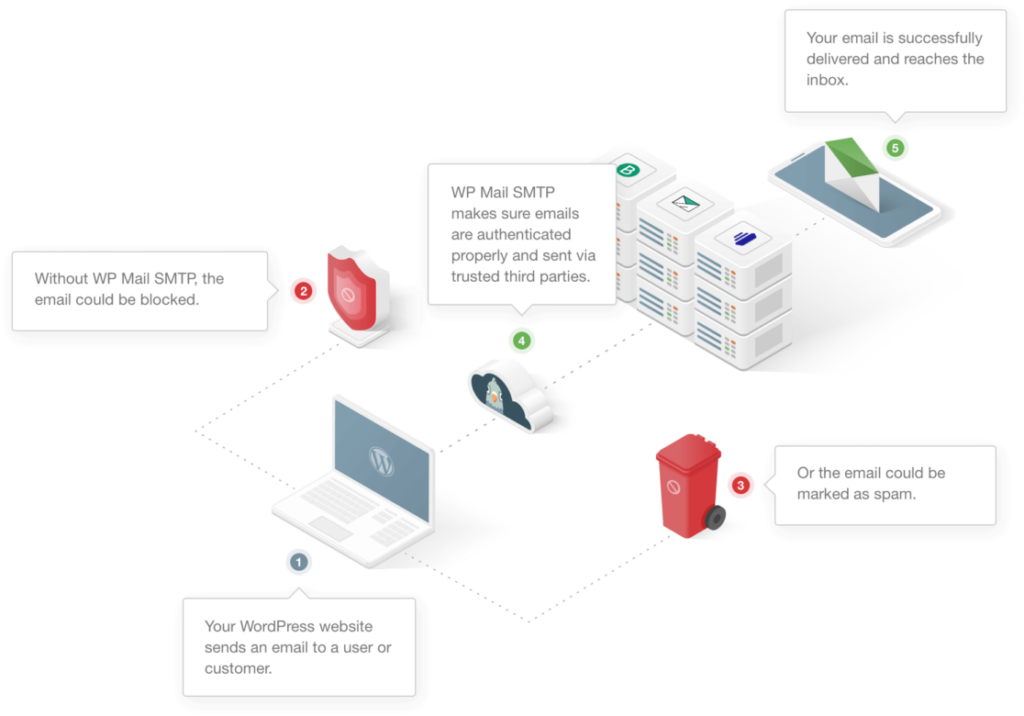
As a result, your WordPress emails are able to avoid spam filters and reach recipients without fail. To install WP Mail SMTP on your site, first select a plan that’s appropriate for your needs.
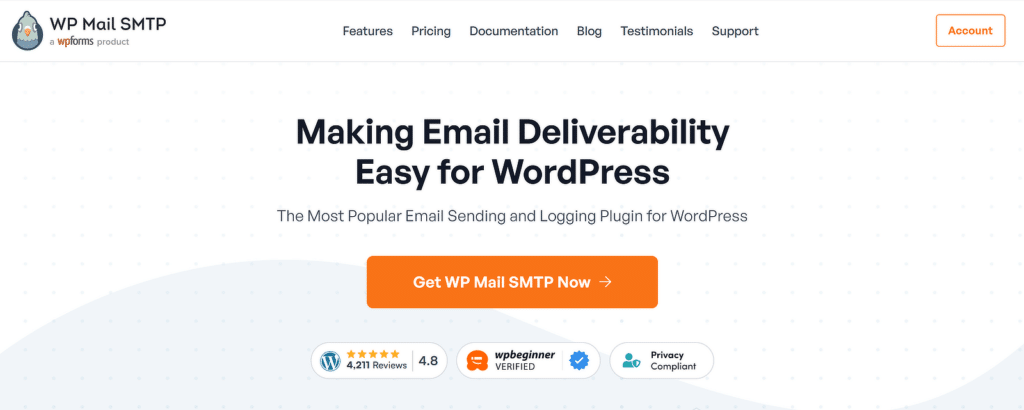
You’ll be able to log into your WP Mail SMTP account area once you’ve purchased a plan and created your account. From your account area, click on the Downloads tab.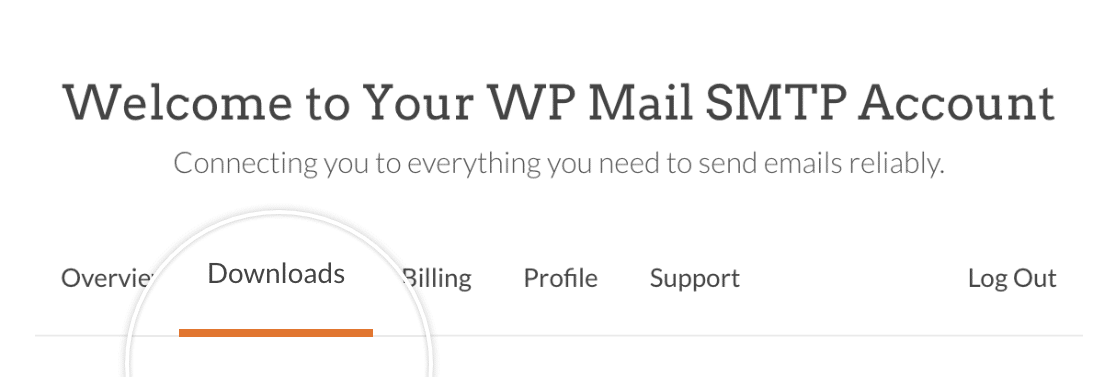
Now, press the Download Mail SMTP button to start the ZIP file download.
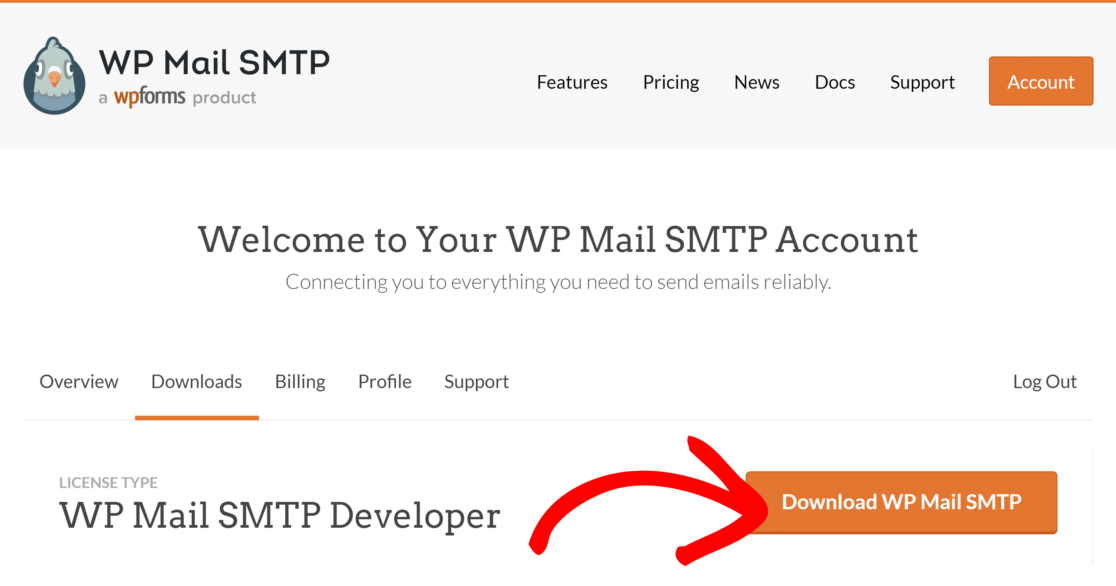
While the download is in progress, it’s a good idea to use this moment to copy your WP Mail SMTP license key. You’ll need this later on.

When the file has finished downloading, open your WordPress dashboard. Then, go to Plugins » Add New.

Here, you can upload the plugin file that you just downloaded. Click on the Choose File button and locate your WP Mail SMTP zip file in your download folder.
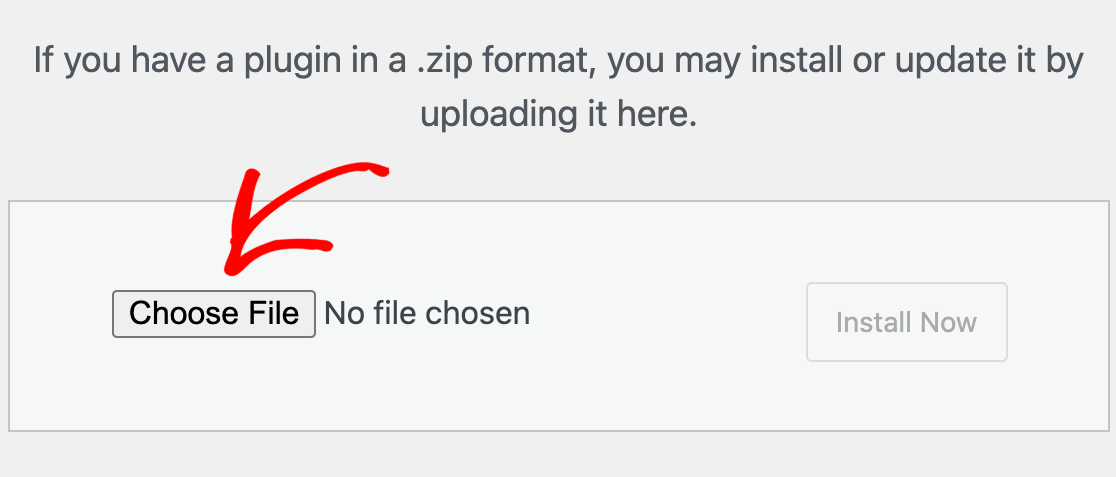
After selecting the file, click on Install Now. It will only take a few seconds for WordPress to install this plugin. Then, press the blue Activate Plugin to activate WP Mail SMTP on your site.
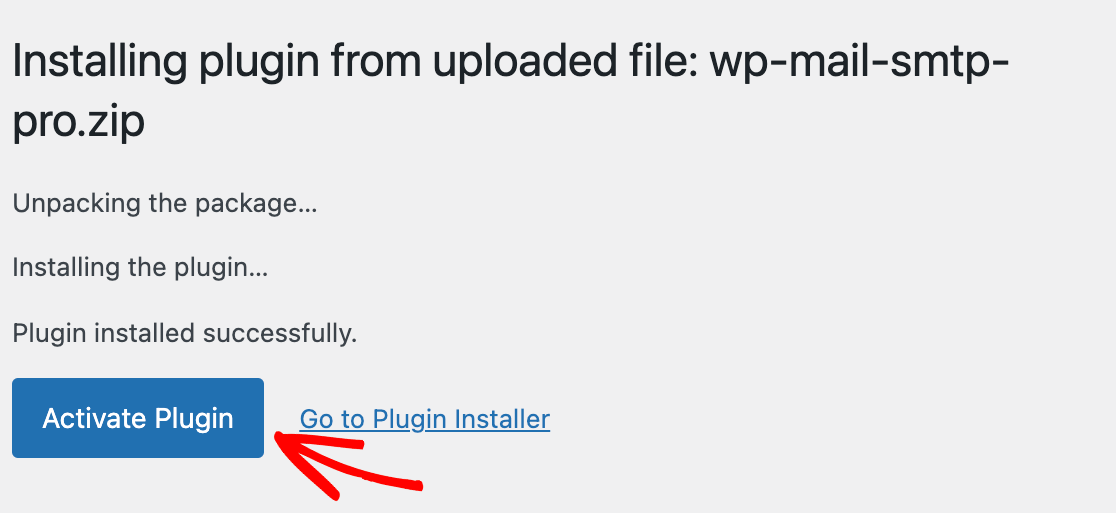
Great job! Now we just have to configure a mailer with WP Mail SMTP to finish the setup.
Step 2: Choose a Reliable Email Provider
With the plugin installed, the next step is to connect your website to a dedicated email service, also known as a mailer. This is the most important part of the process, as it’s what actually fixes your email delivery problems.
The mailer will handle sending your emails with the proper authentication that services like Gmail and Outlook require. So, after you activate the plugin, the setup wizard should launch automatically.
But if for any reason it didn’t start, you can launch it manually. From your WordPress dashboard, go to WP Mail SMTP » Settings. Underneath the Mail section, find and click the Launch Setup Wizard button.
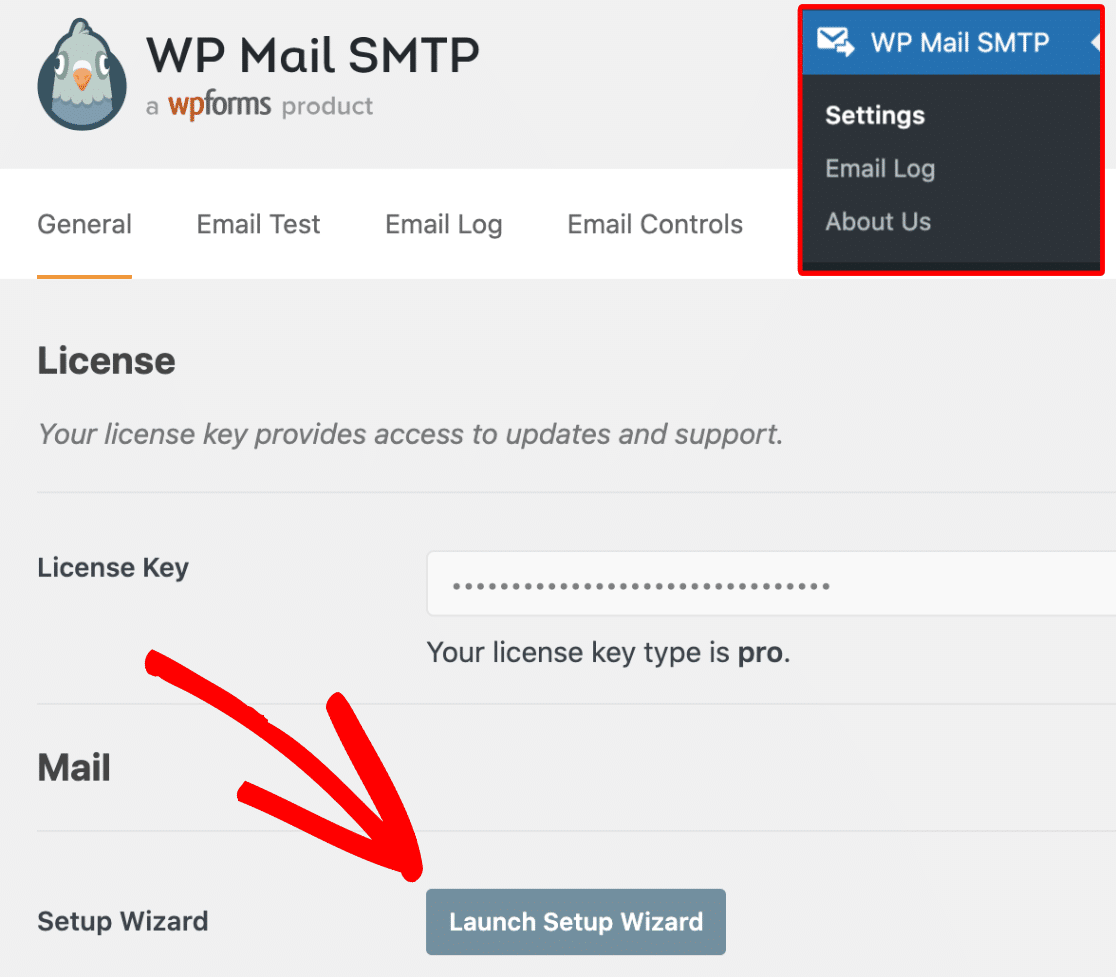
On the next screen, you’ll choose your mailer. If you need a reliable and reasonably priced mailer, I recommend SendLayer. However, you’re free to choose from other available options.
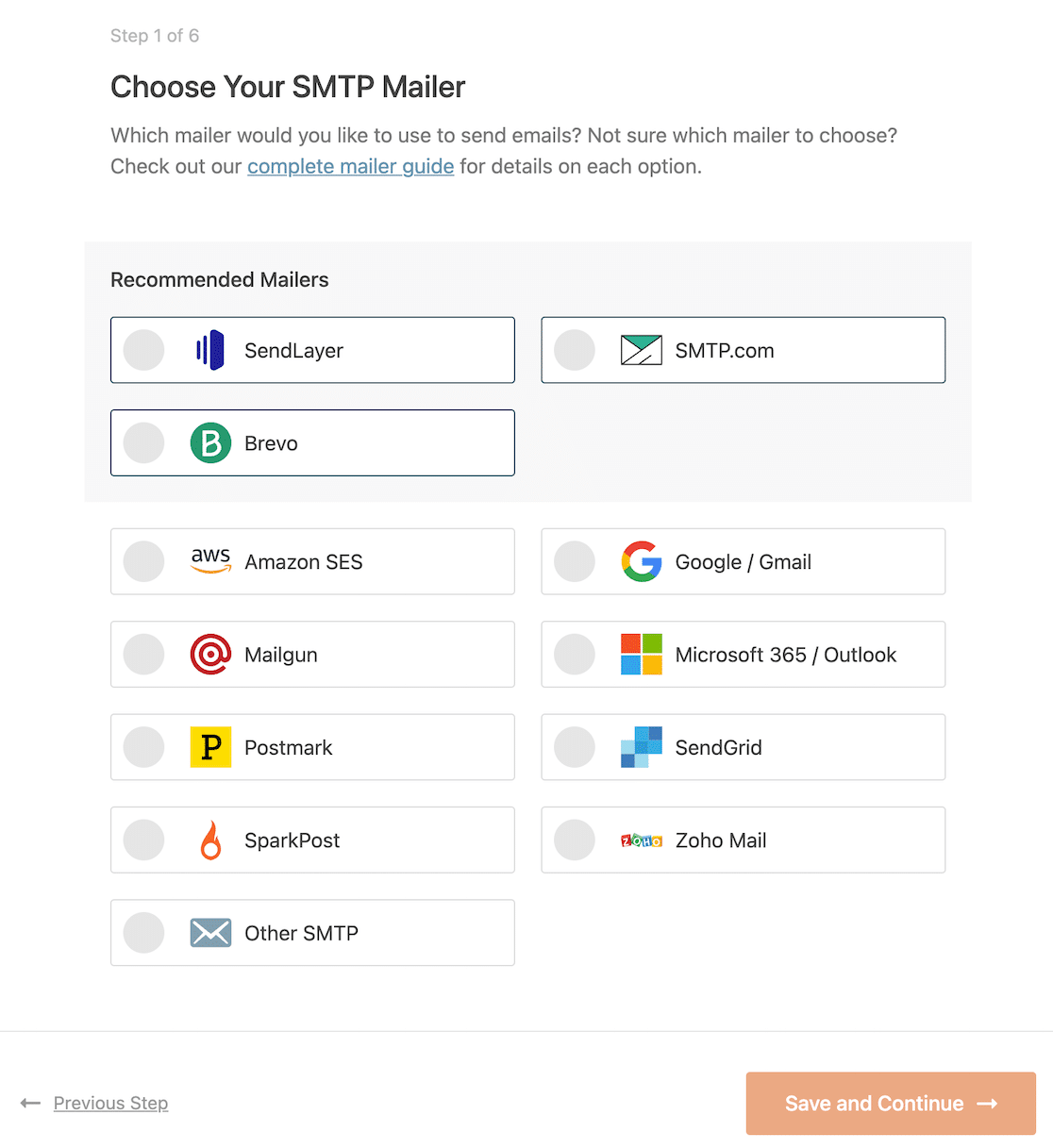
When you’ve selected a mailer, click Save and Continue. You’ll need to fill out a few fields to configure the mailer connection. If you need help setting up a particular mailer, click one of the links below for detailed instructions.
| Mailers available in all versions | Mailers in WP Mail SMTP Pro |
|---|---|
| SendLayer | Amazon SES |
| SMTP.com | Microsoft 365 / Outlook.com |
| Brevo (formerly Sendinblue) | Zoho Mail |
| Google Workspace / Gmail | |
| Mailgun | |
| Postmark | |
| SendGrid | |
| SparkPost | |
| Other SMTP |
In the next step, WP Mail SMTP will ask you to check the features that you want to enable. If you have the paid version, you can enable extra features like email logs (which we highly recommend for the purposes of this topic) and email alerts.
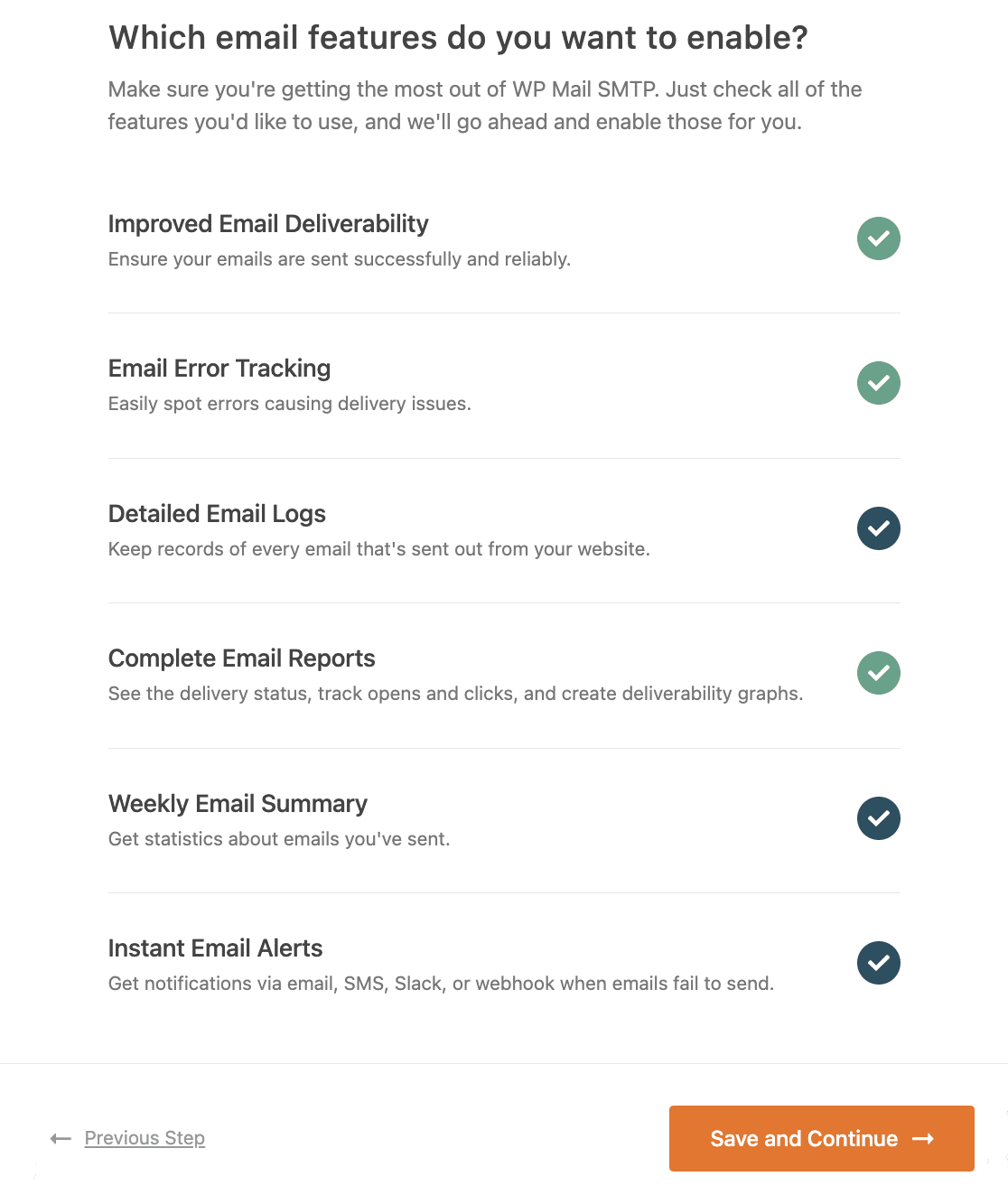
Email logs will not only tell you if your emails are being delivered, but also let you resend emails, print emails, and more. If you enable Detailed Email Logs, Complete Email Reports will also be enabled automatically.
You can choose to receive a Weekly Email Summary if you want to see and overview of your logs each week. Instant Email Alerts will let you know if an email fails to send so you can correct the issue quickly.
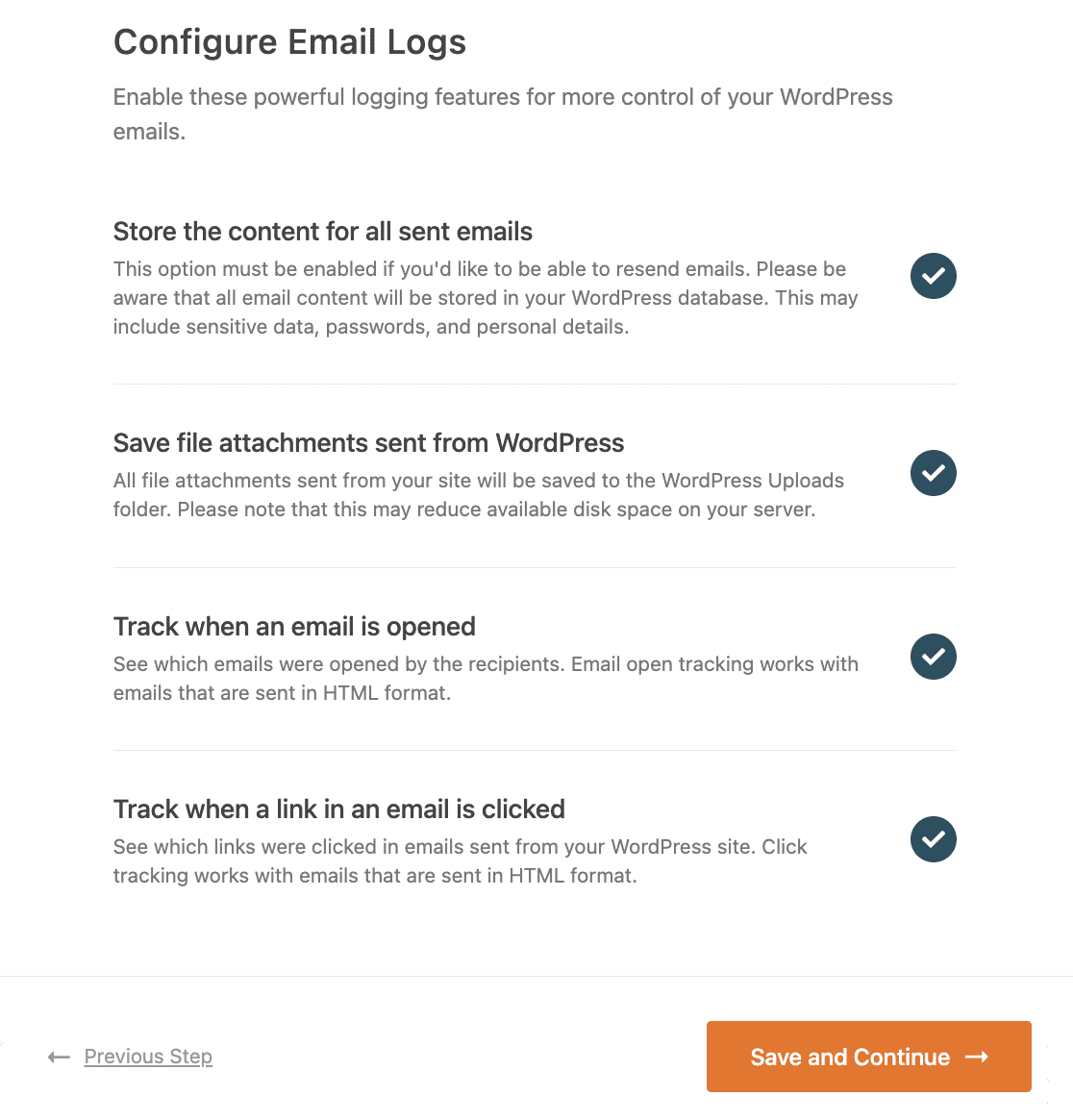
If you enabled email logs, there will be additional settings for you to configure on the next screen. For more details, see our complete email logging guide.
If you check the Pro features, the setup wizard will then require you to add your license key (which we copied in an earlier step). Insert your license key and then press Verify License Key.

The wizard will now send a test email to make sure your configuration is properly set up. If all is good, move to the next step.
Step 3: Get the Send Users Email Plugin
Now that you have WP Mail SMTP configured, you can rest assured that your emails originating from any plugin on your site will always deliver successfully.
But by default, there’s no way in WordPress to write an email and send it to your WordPress users at will. To be able to send emails to any recipient of your choice in WordPress, you’ll need to install a plugin called Send Users Email.
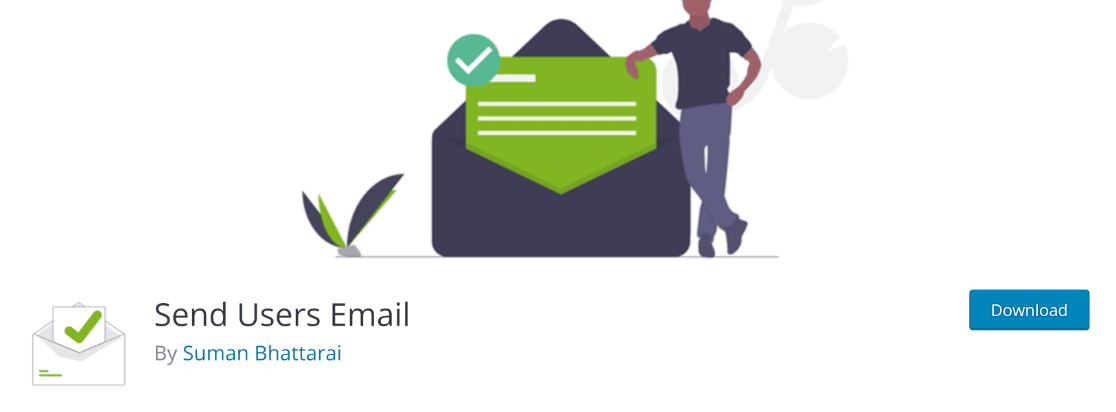
If you need help setting up this plugin, you can check out this guide on installing WordPress plugins. When the plugin is installed and activated on your site, you can start sending emails to your WordPress users easily.
Step 4: Send Email to Registered Users
With your email delivery system now reliable, you’re ready to send announcements directly from your dashboard.
The Send Users Email plugin gives you two simple but powerful options: sending a broadcast to an entire user role, or sending a targeted message to specific individuals.
To send an email to a group of users, navigate to Email to Users » Email Roles in your WordPress dashboard.
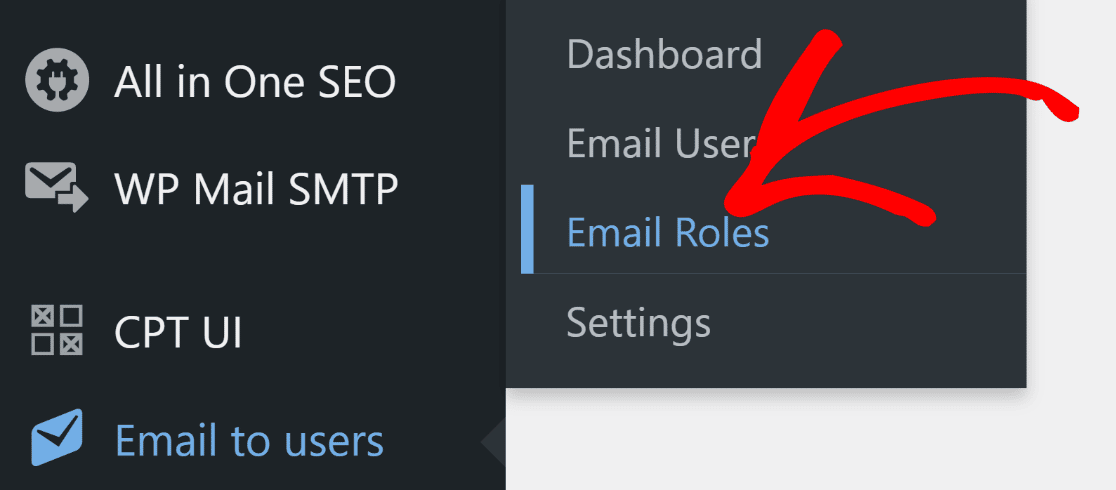
You should now see a page with options to send emails to people selected by their assigned WordPress roles. If you want to send the email to all of your WordPress subscribers, checkmark the box against Subscriber
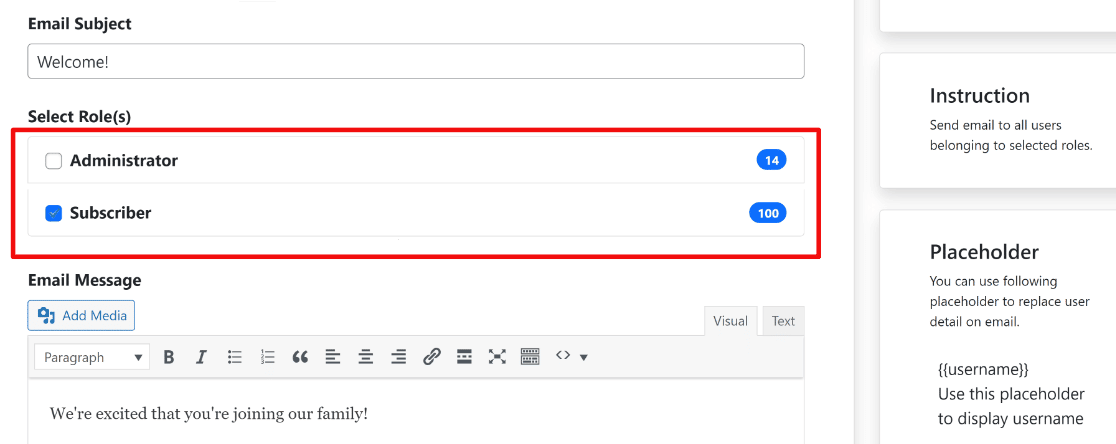
You can also select other types of users as your recipients such as administrators and authors. The email subject field lets you write a subject line for your email. There’s also a rich text field for composing the body of your email message.
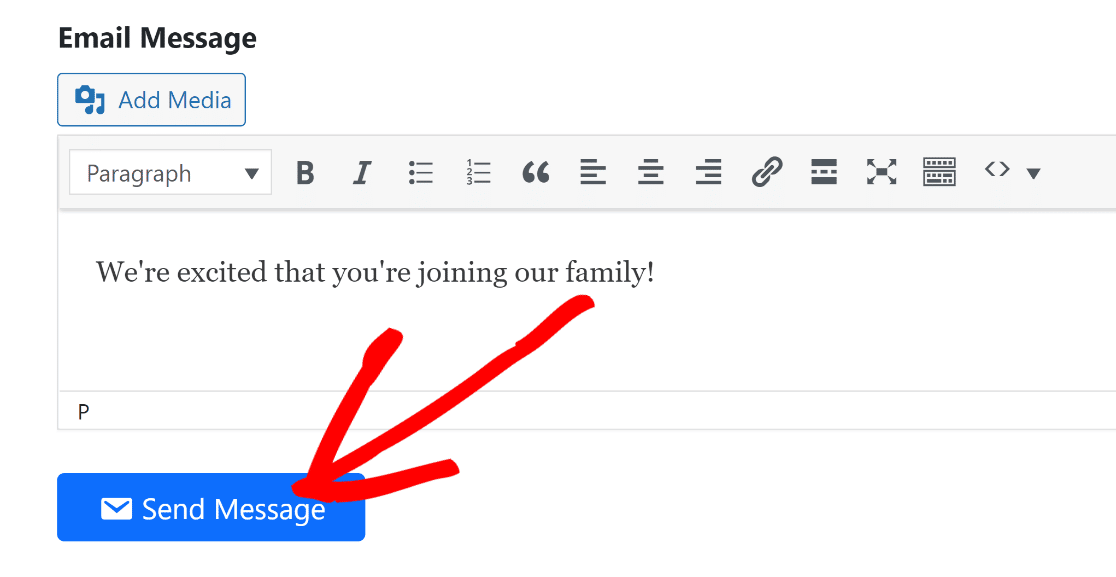
After selecting recipients and writing the email, press the Send Message button, Your email will now start sending to all WordPress users that you selected by role above.
But what if you only want to email individual users rather than mass emailing your entire list? The Send Users Email includes a feature that lets you individually select each registered WordPress user you wish to send your email to.
To access this feature, go to Email to Users » Email Users. Here, you’ll see a list of all registered WordPress users on your site. You can simply select the users that you want to send emails to from this list.
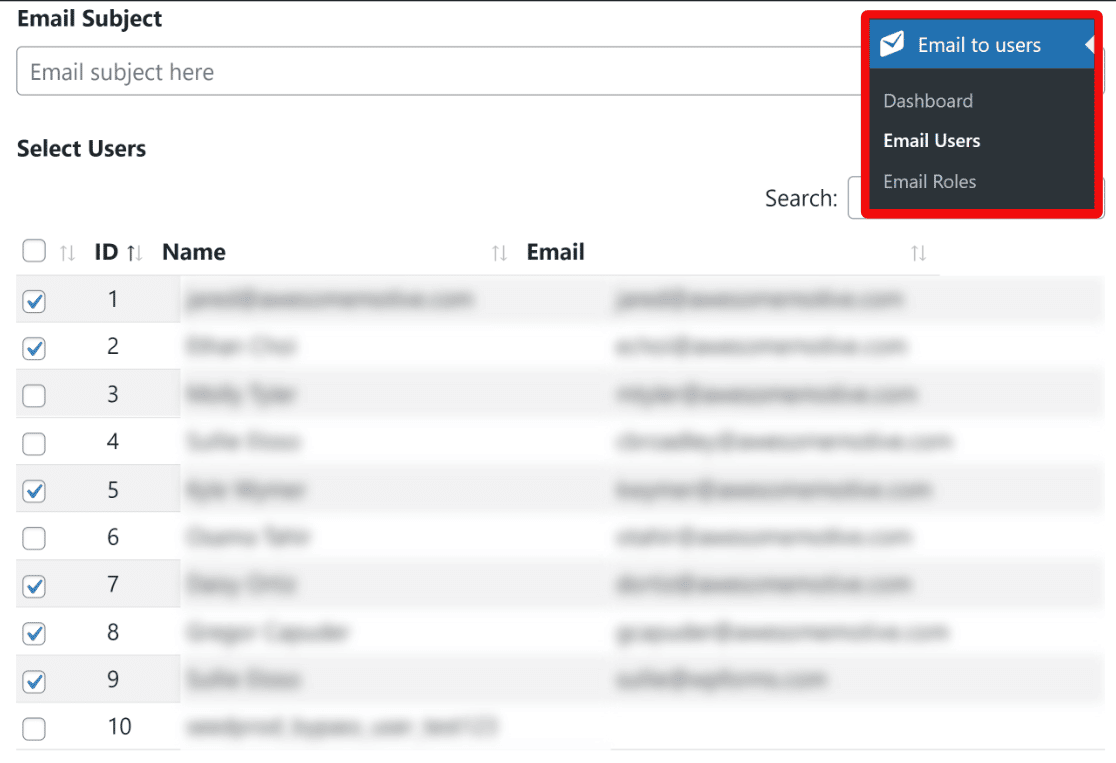
As before, you can use the email subject field and email message fields to customize your subject line and email content. Press the blue Send Message button to send your email to individually selected WordPress users.

Congratulations! You now have the necessary tools to send emails to WordPress users entire individually or to your entire subscriber list.
Step 5: Track Your WordPress Emails (Optional)
After sending a critical announcement, your job isn’t done. You need to confirm that your email was successfully delivered and see if your users are actually opening it.
One of the many benefits of WP Mail SMTP Pro is that it includes email tracking features. With this feature, WP Mail SMTP can track how many times your emails were opened and clicked by your subscribers.
You may have enabled these features in the Setup Wizard. However, if you want to change or update your email log settings, navigate to WP Mail SMTP » Settings.
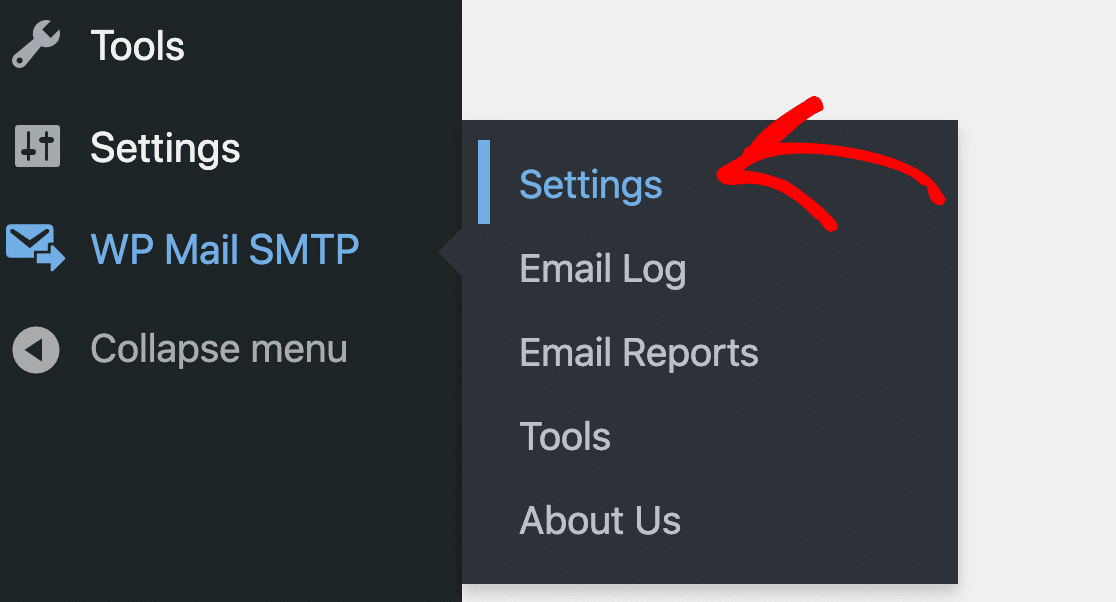
On the top of the Settings page, click on the Email Log tab. Here, make sure that the Email Log option is enabled.

Now scroll down to view additional email tracking settings. You can enable open and click tracking to collect open and click rate data for every WordPress email you send to users.

With email tracking enabled, you will be able to see engagement metrics for each email right within your WordPress dashboard.
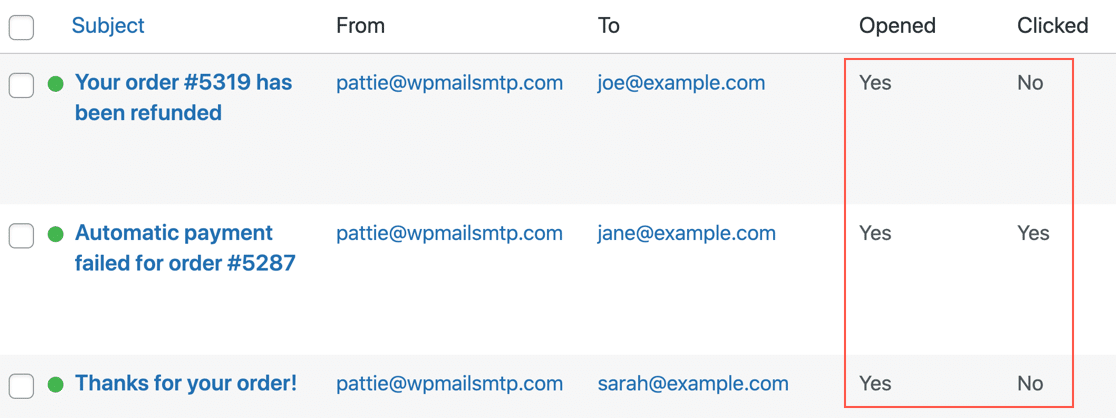
This information is extremely helpful as it allows you to experiment with different subject lines to produce higher engagement levels. For more information, see our guide on tracking WordPress emails.
And that’s all! You now know how to send email to WordPress users (by role and individually) and also track the performance of your emails from your admin area!
FAQs about Sending Email to WordPress Users
Here are answers to the most common questions we get about emailing registered users directly from the WordPress dashboard.
How can I send an email to all registered users in WordPress?
Since WordPress doesn’t have a built-in feature for this, you need a two-plugin solution. First, install WP Mail SMTP to ensure your emails are delivered reliably.
Then, install a free plugin like “Send Users Email” to get a simple interface for composing and sending your message to different user roles.
What is the best plugin to send emails to WordPress users?
The best solution is a combination of two plugins. WP Mail SMTP is the best plugin to handle the email delivery, ensuring your messages don’t go to spam.
For composing and sending the actual email, a free plugin like Send Users Email is the best choice for its simplicity and direct integration with the WordPress user database.
Can I send emails to WordPress users without a plugin?
While it’s technically possible for a developer to write custom PHP code to send emails, it’s not recommended.
You would still face the core problem of unreliable delivery because it would use WordPress’s default wp_mail() function, which often gets blocked or flagged as spam.
Should I use this method for my email newsletter?
No, this method is designed for occasional administrative announcements, like a change in your terms of service or a critical site update.
For marketing newsletters, you should always use a dedicated email marketing service like Brevo or Constant Contact.
Those services are built to handle legal requirements like unsubscribe links, which is essential for marketing emails.
How does WordPress send email by default?
By default, WordPress uses a basic PHP function called wp_mail(). This function relies on your web server’s mail configuration, which is often unauthenticated and not optimized for email delivery.
Because these emails lack the proper “digital signature” (like SPF and DKIM records), they are frequently blocked by services like Gmail and Outlook.
Next, Take Email Tracking to the Next Level
There are only a few WordPress plugins that offer email tracking features. If you’d like to see a quick comparison of the best email tracking plugins, we’ve got a detailed guide just for you!
Additionally, here are a couple of helpful guides to sending a test email from WordPress, and getting alerts when your emails stop working. You might also be interested in our review of the top MailerLite integrations.
And if you’re being bombarded by spam on your site, check out our WordPress spam prevention tips to tackle this problem.
Ready to fix your emails? Get started today with the best WordPress SMTP plugin. WP Mail SMTP Elite includes full White Glove Setup and offers a 14-day money-back guarantee.
If this article helped you out, please follow us on Facebook and Twitter for more WordPress tips and tutorials.

